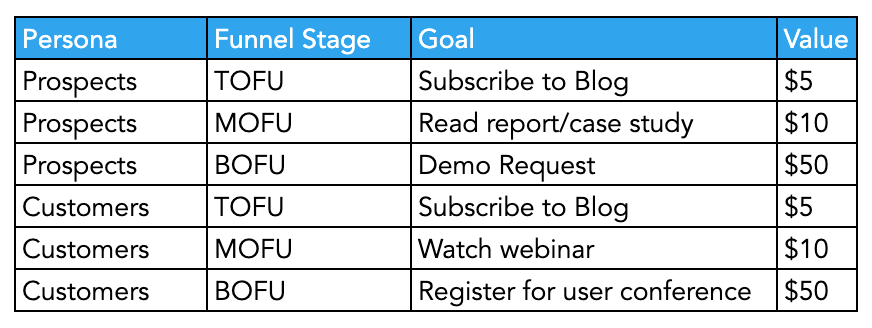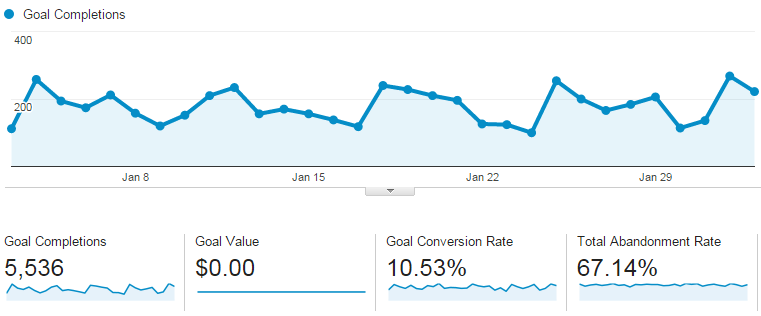Revealing the Blind Destinations: Recognizing What Google Analytics Goals Can not Measure
In the world of electronic analytics, Google Analytics stands as a powerful device for tracking and evaluating on-line individual interactions. Understanding what Google Analytics goals can not gauge is vital for acquiring a comprehensive sight of user habits and engagement.
Individual Behavior on External Platforms
Recognizing exactly how individuals connect on outside platforms is essential for optimizing on-line methods. External platforms, such as social media networks, recommendation internet sites, and online forums, play a substantial function in driving website traffic to a company's web site. By assessing user behavior on these systems, organizations can acquire useful understandings into the performance of their advertising and marketing efforts and the preferences of their target market.
One key element of individual behavior on outside platforms is the reference resource. By tracking where the users are coming from, companies can determine which systems are driving one of the most traffic to their website. This information can help firms designate their resources extra efficiently, concentrating on the platforms that yield the most effective outcomes.

Offline Conversions and Communications
Assessing individual behavior on external systems provides useful insights right into on the internet methods; however, taking into consideration offline conversions and interactions is just as necessary for an extensive understanding of a firm's total performance. Offline conversions, such as in-store acquisitions or phone questions, play a significant duty in many services' success.

Acknowledgment Beyond Last Click
When diving right into the world of electronic marketing analytics, it ends up being vital to look beyond the single touchpoint of the last click for a more extensive understanding of attribution. While Google Analytics offers useful understandings right into customer actions, counting only on last-click acknowledgment can be limiting - what data is google analytics goals unable to track. Attribution models that surpass the last click offer a more nuanced view of the customer journey, taking into consideration all the touchpoints that result in a conversion
Attribution beyond the last click allows online marketers to designate credit history to different interactions along the conversion course, providing a clearer image of the efficiency of various advertising and marketing channels. By discovering multi-touch acknowledgment designs such as linear, time degeneration, or position-based acknowledgment, organizations can much better designate their advertising and marketing budgets and optimize their techniques for maximum impact.
Comprehending the influence of each touchpoint in the conversion procedure is critical for making notified decisions and maximizing ROI. By welcoming attribution past the last click, companies can obtain much deeper insights right into customer habits and tailor their advertising efforts better.
Cross-Device and Cross-Browser Monitoring

Similarly, cross-browser tracking matches cross-device tracking by catching user actions as they switch between different web internet browsers. Comprehending just how individuals connect with internet sites on various browsers can help marketing professionals enhance their on the internet experiences to make sure consistency and performance throughout different platforms.
Qualitative Data and User Intent
Understanding user intent via qualitative information evaluation is crucial for developing targeted electronic marketing strategies that resonate with the requirements and choices of the target audience. Qualitative data provides insights right into the 'why' behind individual actions, shedding light on inspirations, feelings, and choices that quantitative data alone can not record. By examining individual feedback, remarks, and interactions, marketing professionals can uncover valuable details regarding user intent, permitting them to customize their messaging, content, and offerings to better align with what their target market is seeking.
Qualitative information additionally helps in understanding the context in which individuals involve with a website or application. This contextual understanding allows online marketers to create even more appropriate and personalized experiences, inevitably driving higher engagement and conversion rates. By diving into site link customer intent with qualitative information evaluation, services can acquire a much deeper understanding of their target audience, bring about much more reliable marketing approaches that satisfy customers' requirements and assumptions.
Conclusion
To conclude, Google Analytics objectives have constraints in determining customer behavior on outside systems, offline conversions, attribution beyond last click, cross-browser and cross-device tracking, and qualitative data connected to user intent. what data is google analytics goals unable to track. It is very important for organizations to be knowledgeable about these unseen areas in order to supplement their information analysis with other tools and techniques to get a more comprehensive understanding of their audience and improve their general electronic marketing methods
By assessing user behavior on these platforms, services can obtain valuable insights into the efficiency of their advertising initiatives and the choices of their target audience.
Analyzing individual habits on outside systems supplies beneficial understandings right into on-line techniques; nevertheless, taking into consideration offline conversions and interactions is equally necessary for a thorough understanding of a firm's total efficiency.In digital advertising analytics, moving beyond last-click acknowledgment to check out cross-device and cross-browser monitoring is necessary for getting an alternative understanding of individual interactions across various systems and tools. By examining individual feedback, comments, and interactions, online marketers can uncover valuable information concerning individual intent, enabling them to tailor their messaging, web content, and offerings to much better line up with what their audience is looking for.
By diving into user intent via qualitative information analysis, businesses can obtain a much deeper understanding of their target audience, leading to much more effective advertising and marketing methods Find Out More that satisfy users' needs and expectations.